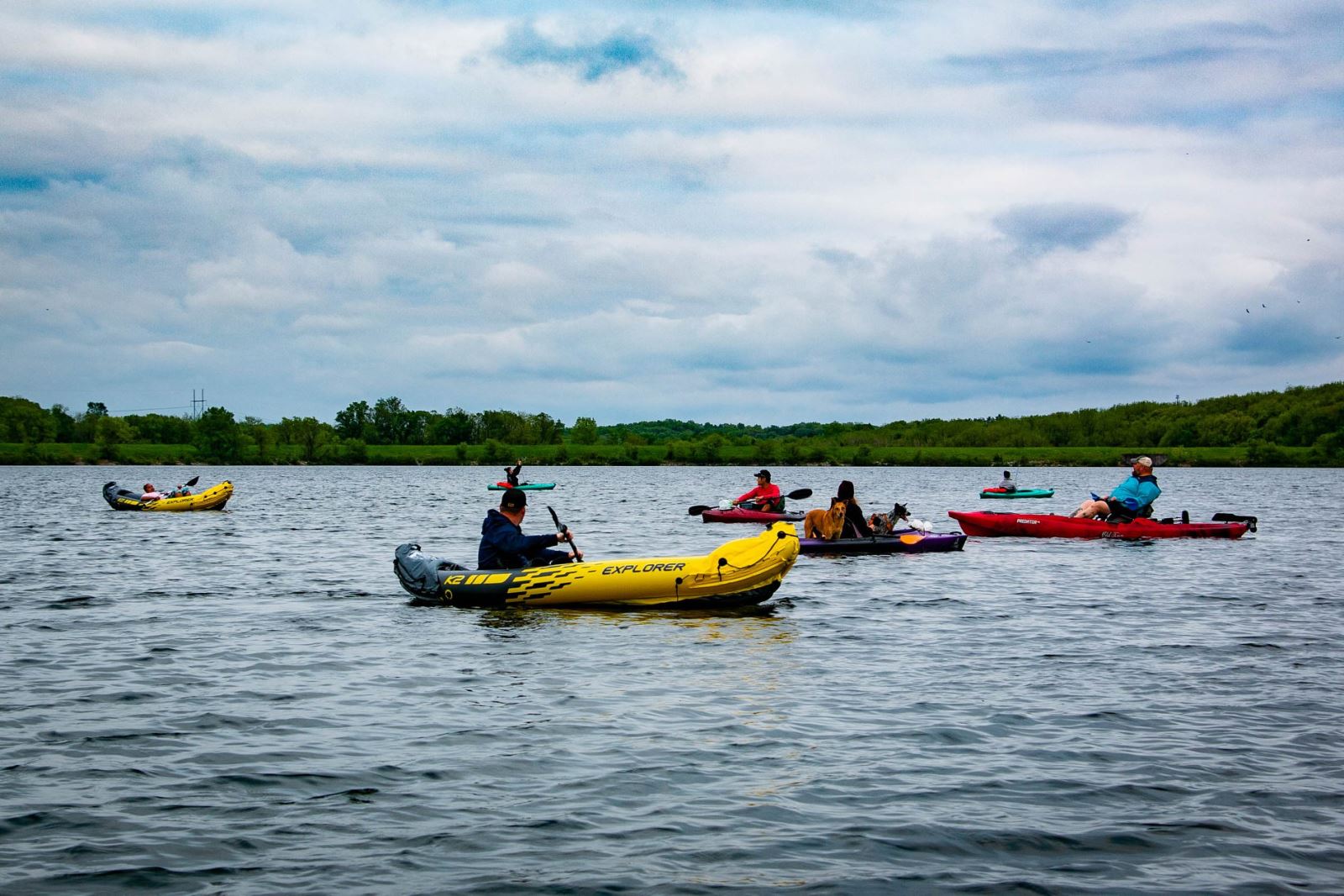Typically, the Iowa DNR's summer attendance indicators are the weekends of Memorial Day and 4th of July, as they represent the peak of park activity most summers. However, this summer every weekend resembled the 4th and Memorial Day.
"Every weekend in June and May was like a holiday weekend," said Coffelt. “Day use numbers are above average; the parking lots are typically full on the weekends and on warm days trails have seen an increase in foot and bike traffic."
Other indicators include traffic counters, parking spot capacity, and the DNR's online campsite reservation system. The reservation website advertises around 4,800 available campsites. Coffelt said based on attendance estimates from this recreation season, every weekend in the last half of May and all of June indicated all electric and full hook up camping sites were used.
April, May, June, and now July have shown high numbers of birders, swimmers, kayakers, fishers, and boaters. However, increased beach usage cannot be reported without an air of caution and not just concerning COVID-19 safety.
The Iowa DNR monitors 39 recreational beaches in Iowa state parks. Of those 39, eight water bodies have E. coli related advisories this weekend.
The effects of water contamination are no small threat.
“Bacterial and viral contamination is one of the big concerns with recreational water use,
particularly swimming, where you're potentially ingesting [water]. The big health effects are things like gastrointestinal illness: stomach upset, diarrhea, and severe cases of that depending on the type of pathogen that you might get exposed to. There are respiratory illnesses that can cause respiratory infections. Skin diseases, so rash, and ear, nose, and throat issues,” said David Cwiertny, Director of Center for Health Effects of Environmental Contamination at the University of Iowa.
Cwiertny also warned of the effects of microcystin, a toxin
_Algae%20thumbnail.jpg)
produced by harmful algal blooms. Microcystin exposure can hinder liver function in animals and humans and cause possible death when pets ingest contaminated water.
However, the Iowa DNR’s recent adoption of the Environmental Protection Agency’s 8 micrograms per liter of microcystin advisory threshold instead of the previous 20 micrograms per liter threshold could help protect public health in Iowa’s water bodies.
“The fact that we were for the longest time using a less stringent number created this gray area where people might feel like they are safe to recreate,” Cwiertny said. “This gives Iowa the chance to be on top of making sure people know water quality is safe.”
The DNR aims to inform the public through advisories. Coffelt emphasized while the Iowa DNR cannot control beach-goers' actions, the water quality monitoring team wants to inform the public the best they can.
"My advice would be to know before you go. We have information on our website and park-goers can call ahead," said Coffelt.
When reflecting on increased use of Iowa’s state parks and beaches, it is difficult to ignore the potential for outdoor recreation if Iowa’s water was better quality.
“It's just a tremendous missed opportunity,” Cwiertny said. “So many communities could thrive around the rivers and other lakes and surface waters we have, but until we get a handle on our water quality… I don’t feel particularly comfortable.”
